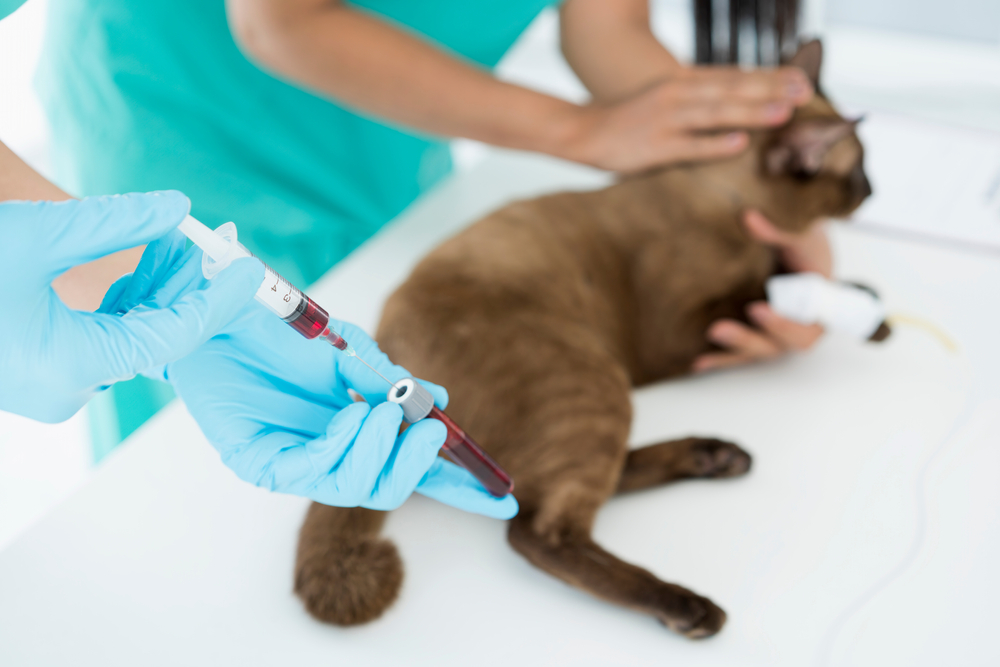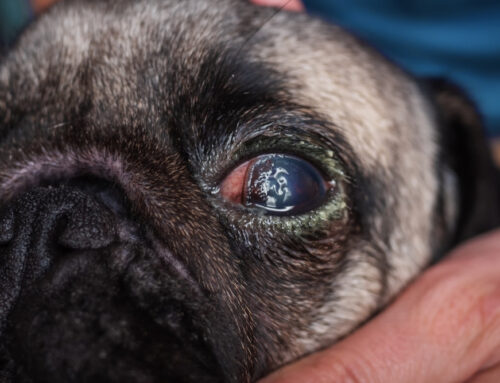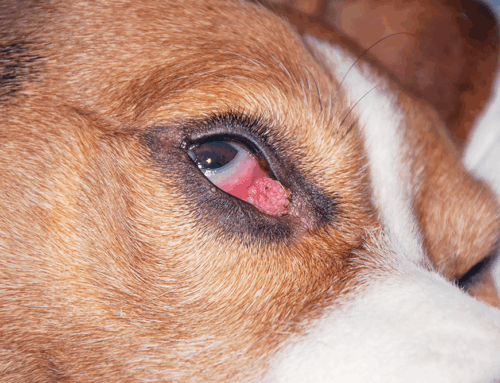Every organ system in your pet’s body works together as a well-oiled machine, but when one system fails, the machinery will malfunction. The kidneys have several important responsibilities in the body, and kidney disease often leads to a cascade of problems, including potential vision loss. But, early disease detection can help prevent eye complications and improve overall treatment success and long-term outcomes. The Envision More Veterinary Ophthalmology team shares what pet owners should know about kidney disease and related eye health concerns.
What is chronic kidney disease in pets?
Chronic kidney disease (CKD), also called chronic renal failure (CRF), typically affects pets in their senior years. The kidneys filter the blood, conserve water, regulate certain minerals and proteins, and help the body produce red blood cells. In a pet with CKD, these functions begin to fail and progressively worsen over time. Treatments can help pets feel better and slow down progression, but cannot reverse the existing damage.
What causes kidney disease in pets?
Many underlying factors can contribute to kidney disease development, but the complex interplay of these factors and their frequently delayed effects can make identification of a clear cause almost impossible. Young or middle-aged pets who develop CKD are more likely to have another contributing disorder, while in older pets, signs are typically attributed to aging.
Possible contributing factors may include:
- Genetic or inherited disorders
- Inflammatory diseases
- Acute kidney injury
- Anesthetic complications
- Infections
- Kidney stones or urinary obstruction
- Parasites
- Toxins
- Clotting disorders or stroke-like events
Chronic kidney disease signs in pets
Most pets do not have any illness signs when their kidney disease begins, because the remaining healthy kidney cells compensate and work harder as other cells die. The disease typically progresses significantly before clinical signs are noted at home or changes are seen in lab work. Common signs when around two-thirds to three-quarters of kidney function is lost include:
- Increased thirst and urination
- Nausea, drooling, or vomiting
- Weight loss
- Bad breath
- Mouth sores
- Lethargy
Chronic kidney disease and eye health in pets
Through complex hormonal interactions, the kidneys play a role in maintaining normal blood volume and blood pressure. The system in CKD pets may develop dysregulation, which causes the blood pressure to increase. Normal systolic blood pressure in pets is the same as people—ideally around 120 millimeters of mercury (mmHg)—but pets with CKD who develop high blood pressure (i.e., hypertension) can have a systolic blood pressure well above 200 mmHg.
Hypertension can significantly worsen existing CKD by speeding up disease progression, and can cause eye damage. The delicate tissue that lines the back of the eye (i.e., the retina) is laced with tiny blood vessels that leak blood into the retina when blood pressure rises, which can then detach and lead to immediate, often permanent blindness.
Retinal bleeding, retinal detachments, and blindness often occur suddenly and may be the first or only sign that your pet has high blood pressure. Cats are more likely to experience this phenomenon than dogs. Signs include widely dilated, unresponsive pupils, and your pet acting confused or lost in a familiar place.
Diagnosing and treating kidney disease in pets
CKD is typically diagnosed during the later disease stages when pets first show signs at home and prompt a veterinary visit. A blood chemistry profile that includes blood urea nitrogen (BUN) and creatinine levels, along with a complete urinalysis, often provides enough information for a diagnosis. Tests that help provide additional information about the disease stage, which guides treatment recommendations, include X-rays, abdominal ultrasound, and blood pressure measurement.
The impact of early detection strategies on chronic kidney disease outcomes

New test protocols to diagnose CKD include a test called symmetric dimethylarginine (SDMA), which is more sensitive than traditional tests and can detect kidney changes several months or years before pets show clinical disease signs. Since development in 2016, the SDMA test has been included in all routine blood chemistry panels and interpreted with other test results to provide a more complete and accurate kidney function picture.
Detecting CKD during this early, pre-clinical stage enables veterinarians to start treatments immediately. Also, special diets that reduce kidney workload, supplements, and medications administered at this stage can protect remaining kidney cells, effectively preventing hypertension and subsequent blindness. Early treatment can also greatly improve a pet’s prognosis and extend their remaining healthy years.
The eyes are not an isolated body system—disease or dysfunction elsewhere in the body can lead to problems with eye health, eye comfort, and vision. Regular wellness examinations combined with early detection blood and urine screening tests by your primary veterinarian are critical for preventing sudden vision loss from undiagnosed kidney disease in aging pets.
Contact our Envision More Veterinary Ophthalmology team if your pet suffers from vision loss, or to learn more about overall health’s impact on vision.







Leave A Comment